 |
| Not a smiling coral, but a fluffy sea slug on its prey, a half eaten finger coral (Porites compressa) ( Photo - M. Heckman) |
We strive to keep a harmonious mix
of creatures in our tanks, but with raw seawater coming in and
new sponge being added continuously for the tiger cowries to
eat, it is inevitable that some less desirable characters will appear.
Such was the case recently - I noticed earlier in the week that a couple of the coral fragments looked seriously sick. They were discolored and pale, so I examined them for parasites and isolated them from the others. A day later I checked again and the culprit had finally gorged itself sufficiently that it it was large enough to be discovered
. It was the coral eating sea slug Phestilla lugubris (the "smile" on the coral above).
Interestingly, we had this same problem last year at about the same time. In that case, the corals looked fine on Friday and were a mess by Monday. In fact, the sea slugs last year were so well fed in just a few days, that they were already busy laying eggs by the time I got to them.
 |
Note the sea slug at top, the areas that the sea slug has eaten and the
various egg masses that it has laid - all in one weekend. |
 |
| Closer view - M. Heckman Photo |
Phestilla tend to hide
under corals or rocks during the day and come out at night to feed on
living corals. In the wild, they are rarely a major issue for coral
health since many predators will feed on them. A study by Dr. Aeby (from
HIMB) and colleagues found that the threadfin butterflyfish (Chaetodon auriga) would eat small specimens and the old woman wrasse (Thalassoma ballieui) would eat any large Phestilla slugs that made the mistake of wandering up in the open during the day.
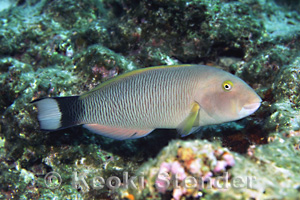 |
| Old woman wrasse |
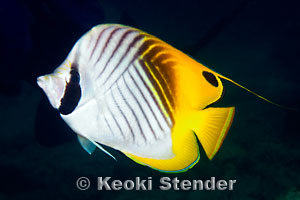 |
| Threadfin butterflyfish |
As to those hidden during the
day, they would be sharing their habitat with various crabs and mantis
shrimp that Dr. Aeby and group also found would feed on the slugs.
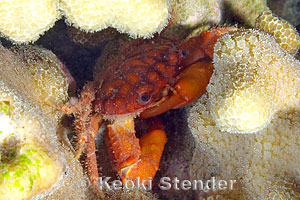 |
| Areolated xanthid crab |
The slugs are not without their
own defenses. Although they are not able to transfer the coral's
stinging cells to their skin (like some of their relatives) they do
exude a slightly noxious substance when disturbed.
These are one of the few sea slugs for which scientist have figured out the entire life history - egg to
adult in less than 40 days! Adults live only a few months, lay
thousands of eggs a day, then die a couple of weeks later. Contrast this
to an adult sea cucumber that might live decades or more. Some invertebrates
move slow and live slow, some move slow and live fast. Phestilla may crawl slow, but they can eat 10 square inches of coral a day, then lay thousands of eggs and
pass away, leaving their progeny to continue on.
Crawl slow, eat large,
live fast.
For some great sites on these animals (and some of my references for this article), see:
The
Phestilla lugubris page at the
Sea Slug Forum - a great site, bits of info, questions with pictures from readers and answers to those questions. See:
http://www.seaslugforum.net/showall/pheslugu
Sea Slugs of Hawaii by
Cory Pittman and Pauline Fiene - excellent site - simple,
straightforward information with life history and more. A good place to
go to learn about our local sea slugs (also, Cory was one of the first
marine biologists I encountered as an undergraduate - ask me about the
meeting sometime). See: http://seaslugsofhawaii.com/species/Phestilla-lugubris-a.html
 |
| Dana Riddle Photo |
Control of populations of the coral-feeding nudibranch Phestilla sibogae by fish and crustacean predators. D.J. Gochfeld and G.S. Aeby. MARINE BIOLOGY, Vol. 130, Number 1 (1997)






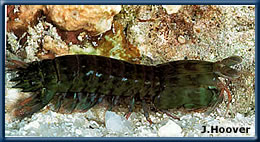

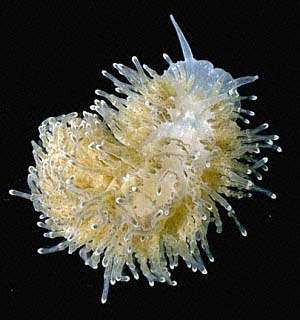



No comments:
Post a Comment